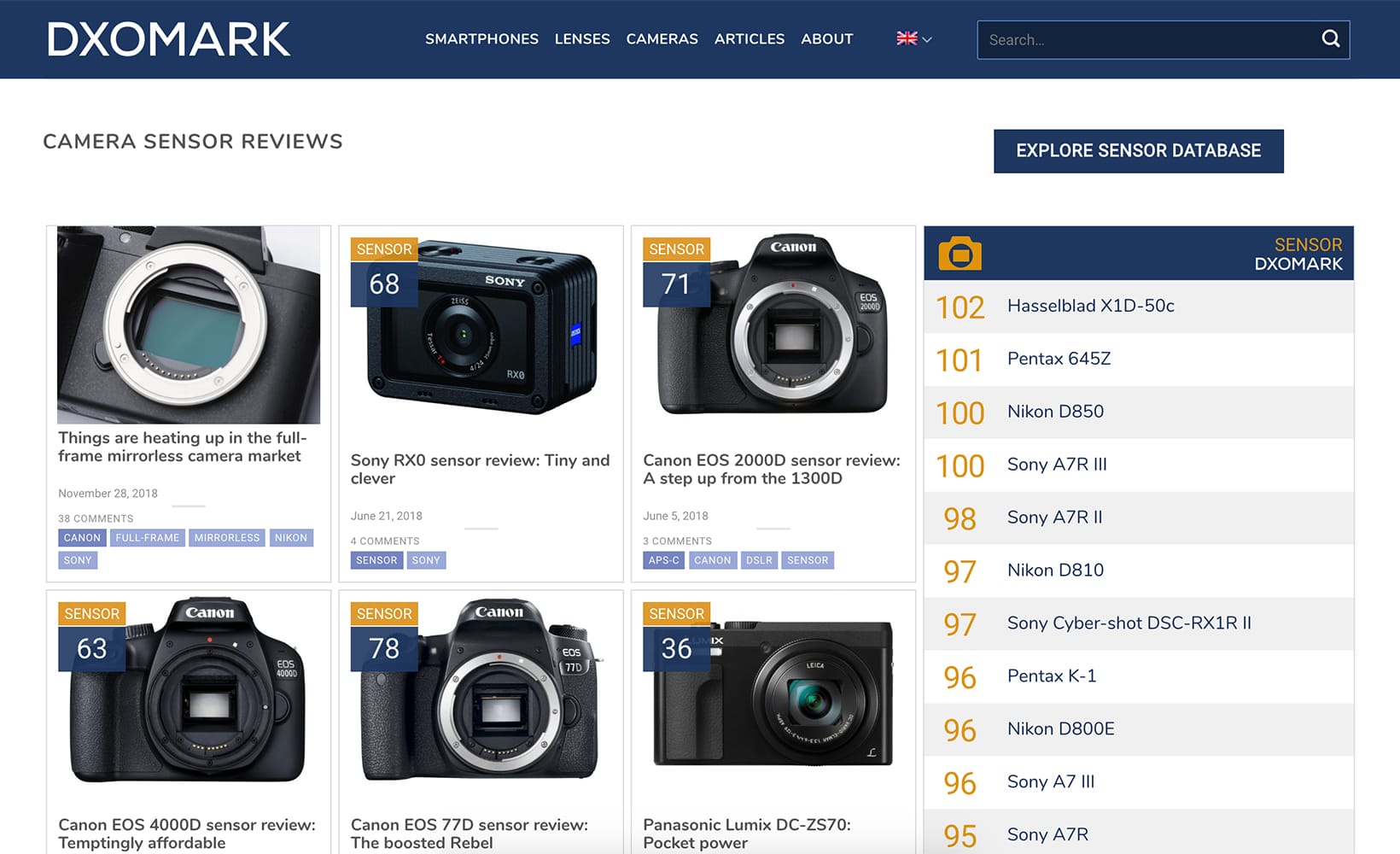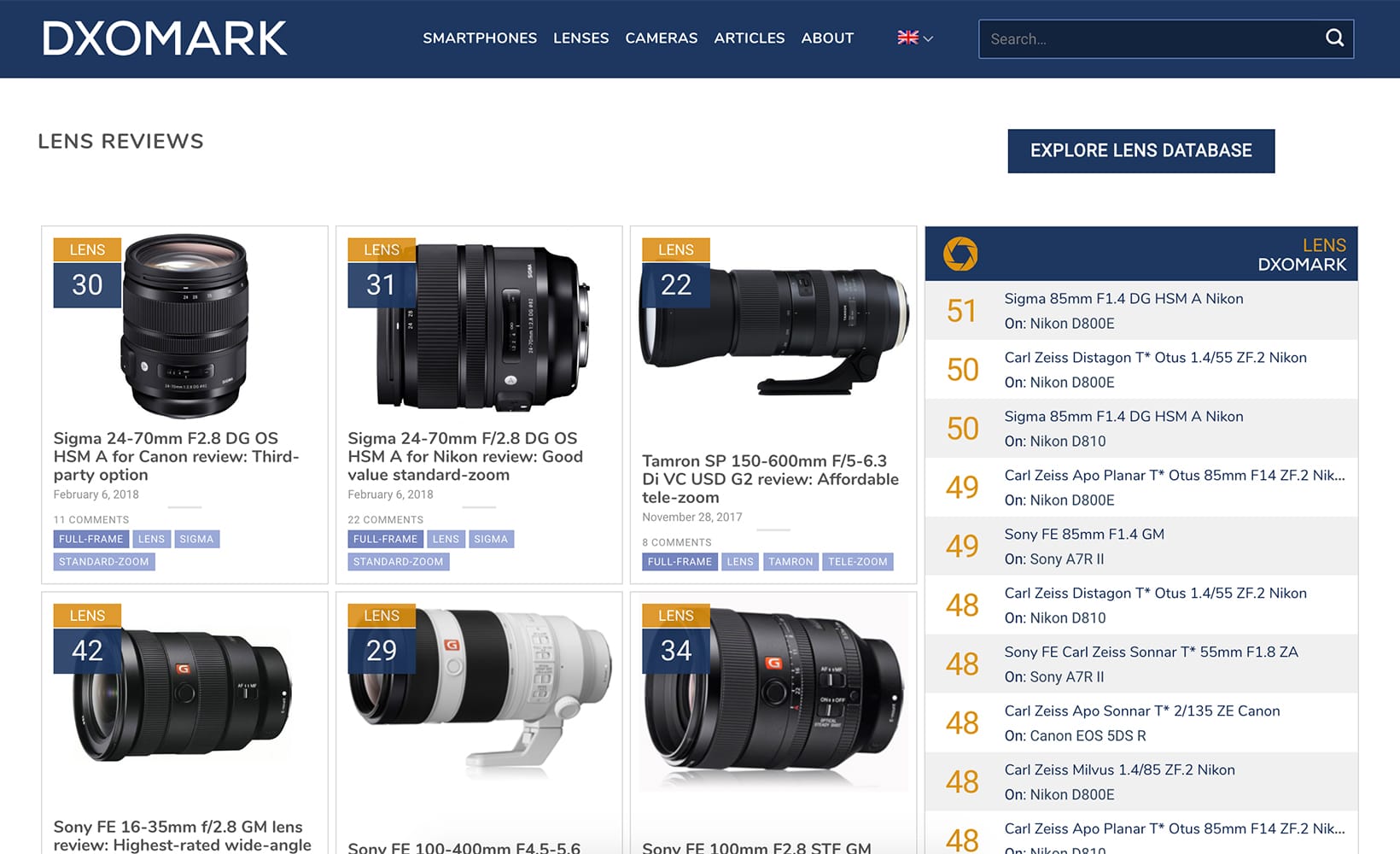DxOMark’s Rating System: What You Need to Know
Photographers invest a lot on their equipment and gear. So when it’s time to buy or upgrade a camera or lens, it is always best to allocate some time for research if the aim is to come up with a purchase worth investing in.
Deciding to spend on new equipment or gear may be essential, but photographers still want to know that they’re getting their money’s worth. This is why, for many, DxOMark’s sensor quality and lens rating system is a big help.

DxOMark’s benchmark for quality is something that a lot of photographers rely on because it gives them a clear idea of what their cameras and lenses are capable of. Its scientific process has been used for years by photographers who value quality investments. Whether you are a novice or a professional photographer, it pays if you learn how to use DxOMark’s sensor quality and lens rating system, especially if you put a high value on image quality.
What is DxOMark?
DxOMark started in 2008 with the goal of delivering a reliable image quality benchmark (for cameras, lenses, and smartphones). It uses industry-grade lab tools in rating the quality of a camera, lens, and smartphone. The higher the rating is for a particular product, the better its image quality.
The DxOMark technique is like no other because it does not only use its own scientific approach for testing image quality, it also has high-tech lab equipment called the Analyzer. It is a hardware and software system that uses test protocols in coming up with reliable and usable results or ratings. It is compatible with both JPEG and RAW images, and is good for both photos and videos.
Another characteristic that sets DxOMark apart from other image quality analyzers is its ability to calculate each image quality attribute and come up with a sub-score. This allows camera and lens owners to carefully examine their gear accordingly.
The DxOMark team is composed of highly skilled, well-trained, and dedicated image scientists, product managers, and engineers. They are capable of sharing their expertise and consulting services in all aspects of camera and lens development.

How DxOMark Tests Cameras and Lenses
DxOMark follows strict guidelines and practices in testing cameras and lenses. For starters, it has its own camera testing lab where all the hard work is done. This lab has all the necessary equipment for reliable testing: light meters, lighting systems, spectrometers, light boxes, telemeters, and test targets, among many others.
For photographers who want in-depth, honest to goodness reviews on certain camera sensors, DxOMark has a page on its website dedicated solely on this. The image quality of these sensors is carefully measured (for those that record in RAW format) before they are analyzed. This is done before any JPG processing or demosaicing is done.
The following criteria is used for the analysis: color sensitivity, ISO sensitivity (speed), and noise (signal-to-noise ratio, standard deviation, tonal range, and dynamic range). DxOMark then comes up with sub-scores and overall scores.
For its lens reviews, DxOMark uses the following as criteria: distortion, resolution (from the Modulation Transfer Function measurement), light transmission (T-stop), vignetting, and chromatic aberrations.
DxOMark has test protocols that photographers can use for further understanding the scores and methodology used in the tests.
Using DxOMark Before Purchasing a New Camera or Lens
A lot of photographers turn to DxOMark for guidance in choosing the best camera or lens, especially the new models and brands. The ratings may look daunting, but there are several options to choose from when it comes to learning more about the camera or lens you are planning to purchase.
One of the easiest ways to find what you need is to navigate to the Camera Sensor Reviews and the Lens Reviews pages. On these pages, you’ll find a list of specific camera sensor brands and lens products. Each one is properly labeled with their product name. All you need to do is click on the one you are planning to purchase. Once you click on one, you’ll be directed to a page that features a full review of the product, with key specifications and overall scores indicated.
For lenses, you’ll be able to determine the sharpness, transmission, vignetting, distortion, and chromatic aberration via a Lens Metric Scores table.
Photographers will be able to view comparisons with other lenses of similar types and by competing brands. This allows them to come up with a fair decision on which one is the best to buy.
For camera sensors, the Sensor Scores box specifies the color depth, low-light ISO, and dynamic range of a product.
A more detailed analysis and comparison are indicated towards the last part of the review. This allows photographers to better understand the scores and ratings.
Aside from these reviews, photographers can also take advantage of the Analyzer, which is helpful in generating analysis data via a simple process. All you need to do is setup the location for your test, shoot the subject, collect the image, and then analyze using the Analyzer. Once exported, the results will be generated and you’ll receive a copy of the report. This is for the manual process.
For the automated process, all you need to do is click on one button and the process will work on its own with the report generated in a matter of minutes.
Conclusion
Getting all the information you need about a product will help you determine whether it’s a good investment or not. This is something important for photographers who take their craft seriously. So if you are one of them, find time to visit the DxOMark website and check out what you can learn about that camera or lens you have long been itching to buy. It pays to know!
